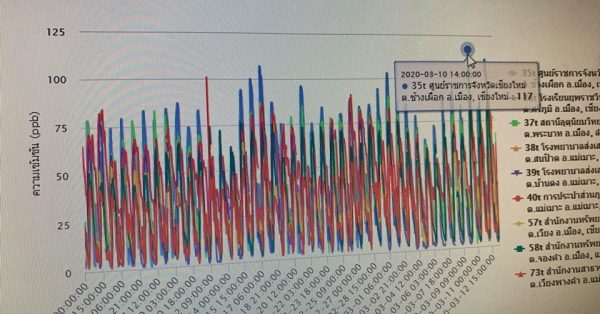AIT expert advises to avoid outdoor activities during the daytime
"Ozone pollution at ground level is more detrimental to our health than PM 2.5. With heat and sunlight, the mixture of these elements becomes toxic, especially in summer," Dr Ekbordin Winijkul said.
By Kanda Yaemboonruang
Dr. Ekbordin Winijkul, Assistant Professor in the Department of Energy, Environment, and Climate Change, is an AIT atmospherics scientist whose work focuses on PM 2.5 and other air pollution. His current research shows that over the past few weeks, the level of ‘ozone’, which is a toxic gas, has been higher than normal in some areas. For example, in Chiangmai in northern Thailand, he found that on March 10 the level of ozone was at 117 ppb (part per billion) for 8 hours. This level was far higher than the normal maximum level of 70 ppb.

It is normal to detect a higher level of ground-ozone during the summer as high temperatures and sunlight are the catalysts for an increase in the ground-ozone level. Ground-ozone is considered toxic. A large volume can lead to health effects and can induce asthma. It is a hidden danger as it is corrosive, and has no color or smell, making it hard to be detected, Dr. Ekbordin said.

Dr. Ekbordin suggests avoiding outdoor activities during the daytime. He is concerned about people in northern Thailand as the high level of PM 2.5 combined with the increasing level of ground-zone ozone in some areas, including Chiangrai, may pose extremely high risks or health problems.
He added that ozone is one type of air pollution that environmental academics around the world are keeping an eye on, as it has posed problems globally.
Read Thai language report in Thai PBS:
https://news.thaipbs.or.th/content/289818

